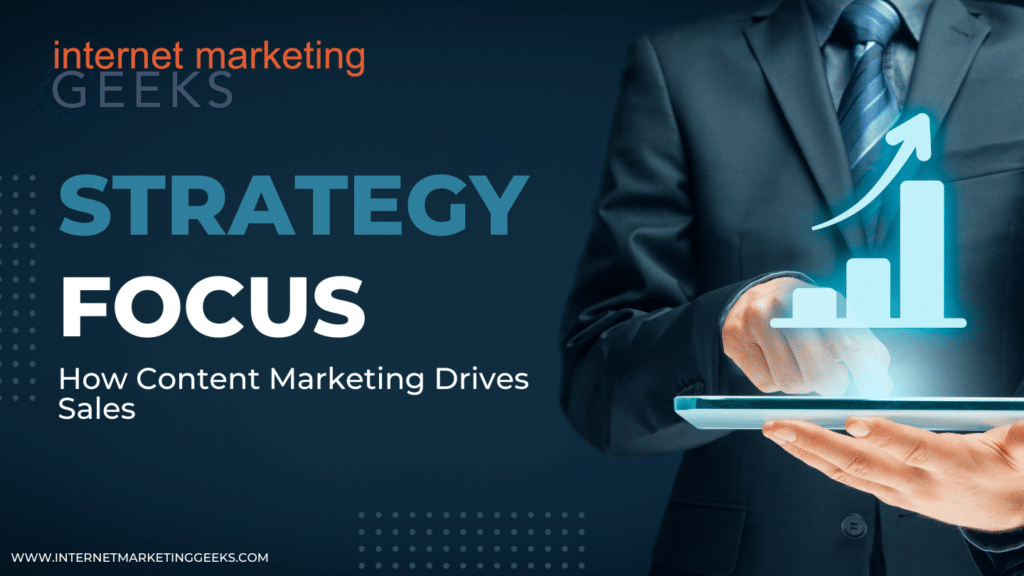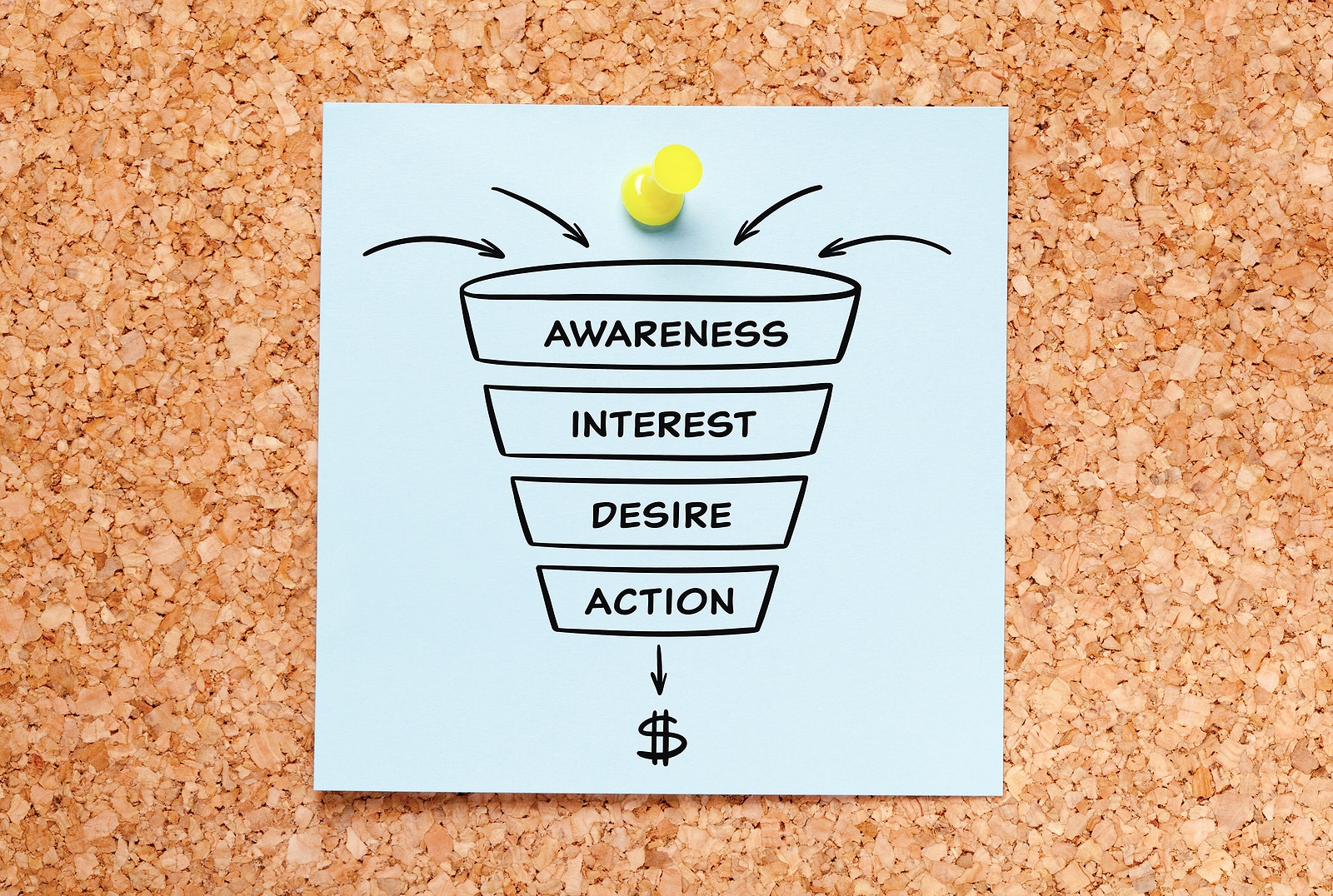The Art of Conversion: How Content Marketing Drives Sales

Within the digital marketing space, content truly is king! It goes above and beyond a source of information; content marketing has demonstrated over the years that it has a remarkable capacity to stimulate sales and your bottom line. We will how content marketing drives sales and so much more in this blog post; as our team will delve into how it can be a catalyst for elevating sales and revenue.
Getting the Hang of How Content Boosts Sales
Content plays an indispensable role in the intricately woven fabric of the sales funnel. It’s not just about creating content for the sake of it- it’s about strategically positioning content to guide potential customers through the various stages of their buyer’s journey. Whether it’s creating informative blog posts, engaging videos, or compelling social media updates, content serves as the connective tissue between your brand and your audience.
One of the primary ways content contributes to sales is by establishing trust and credibility. When you consistently produce high-quality content that educates, informs, or entertains your audience, you position your brand as an authority in your niche. Trust is a crucial element in the decision-making process, and by providing valuable content, you’re effectively laying the foundation for prospective customers to choose your products or services.
Moreover, content marketing excels in addressing customer pain points. By empathizing with your target audience’s challenges and providing solutions through your content, you not only alleviate their concerns but also subtly guide them toward considering your offerings as the solution they need.
SEO and Content Marketing
Another symbiotic relationship exists between content marketing and search engine optimization (SEO). High-quality, relevant content fuels your SEO efforts. Search engines favor websites that consistently provide valuable content to their users. Therefore, by investing in content creation, you enhance your website’s visibility in search engine results pages (SERPs), ultimately driving more organic traffic.
Long-tail keywords are an integral part of this equation. Creating content around long-tail keywords—specific, highly targeted phrases—allows you to capture the attention of users who are actively searching for solutions or products related to your industry. As search engines become more sophisticated, focusing on long-tail keywords in your content strategy becomes increasingly important for attracting the right audience.
Plus, creating kick-ass content isn’t just about keywords. It also helps you get more backlinks – those golden tickets to better SEO. When your content is top-notch and people can’t help but share it, other websites and blogs start linking back to you as a go-to resource. This not only boosts your traffic from these referrals but amps up your site’s street cred with search engines too! And guess what? That bumps up your search rankings.
Content Formats That Drive Sales
The versatility of content marketing is one of its most remarkable attributes when it comes to assessing how content marketing drives sales. It offers various formats to engage with your audience effectively. Here are some key formats that can drive sales:
- Deep Dives and Expert Takes: These are your bread and butter for giving the full scoop, spilling industry secrets, and proving you’re a thought leader. Teaching through deep dives can really push product discovery since they give the nitty-gritty on what you offer.
- Pictures Worth a Thousand Words: Think about visuals like infographics or data diagrams. They take tricky stuff and make it snackable for your readers. Really handy when you’ve got some numbers to share, or need to draw comparisons.
Personalization and Customer Engagement When Looking At How Content Marketing Drives Sales

One big plus of content marketing? It lets you get personal. When your content hits home with individual tastes and needs, you can see a real boost in sales. Here’s how to make that happen:
- Personalized Content Recommendations: Analyzing user behavior and preferences allows you to provide personalized content recommendations. This not only keeps users engaged but also nudges them toward relevant products or services.
- Let’s Chat Email Marketing and Drip Campaigns: Can’t deny, email marketing still packs a punch when it comes to turning potential customers into buyers. And those drip campaigns? They let you dish out tailored, automated emails that hit the sweet spot for your subscribers’ wants and needs.
- Interactive Stuff: Think quizzes, polls, and tests. They’re fun for your audience and give you the lowdown on what they like or struggle with. You can use this gold mine of info to tailor-make product suggestions and solve their problems.
Measuring Content Marketing ROI
Getting results from content marketing isn’t just about making and sharing stuff; it’s all about hitting real, measurable targets. To really nail how well you’re doing, you gotta set solid goals and key performance indicators (KPIs).
Setting clear objectives for your content marketing efforts is the first step in measuring ROI. Whether your goal is to increase website traffic, generate leads, or directly boost sales, having defined targets will provide a benchmark against which you can evaluate your progress.
Want to see how your content marketing affects sales? You gotta track those conversions. Use stuff like Google Analytics or automation platforms to keep an eye on which of your site visitors turned into buyers after checking out your content. This way, you’ll know exactly what type of content gets the cash register ringing.
Understanding the customer journey is equally important when measuring content marketing ROI. Different content pieces may influence potential customers at various stages of their journey. For example, blog posts may introduce them to your brand, while in-depth product guides may seal the deal. By analyzing the role of content at each stage of the customer journey, you can optimize your content strategy for maximum impact.
Future-Proofing Your Content Marketing Strategy
It is important to note that the digital marketing sphere is constantly shifting. What’s hot today in AI might be old news tomorrow- so be sure that your content strategy is ready for what comes next!
Acknowledge the ever-changing landscape of digital marketing. Trends, technologies, and consumer behaviors are in a constant state of flux. It’s essential to stay updated with the latest developments, adapt to new trends, and be agile in your approach. Once such area is Artificial Intelligence- these tools can analyze vast amounts of data to provide valuable insights into your audience’s preferences and behaviors.
In conclusion, content marketing is undeniably the bridge between potential customers and conversions. It’s not just about creating content—it’s about crafting content that resonates with your audience, guides them through the sales funnel, and ultimately drives sales and revenue. By delivering consistent value through your content, you establish trust, credibility, and lasting relationships with your audience.
Keep in mind, content marketing is like a live wire—always buzzing and changing. To stay on top of your game, keep learning, embrace the latest tech trends and never underestimate the magic of good content. Whether you’re just starting out or running an e-commerce powerhouse, solid content can turbocharge your sales like nothing else and feel free to look at how Internet Marketing Geeks can help!


